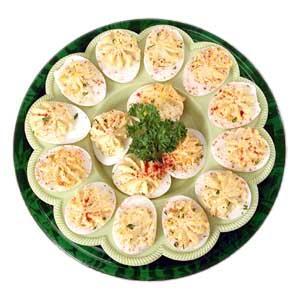-
- U.S. Senate votes to extend hate crime protections to gays and lesbians
- Judge grants divorce in case person claimed a same-sex union
- Lawsuit challenges 1913 Mass. law barring out-of-state couples from marrying
- Lesbian researchers confront their community’s array of health problems
- Catholic group identifies same-sex marriage votes
- National News Briefs
- World News Briefs
dining out
Summer cooking sans contamination
Published Thursday, 24-Jun-2004 in issue 861
Are you practicing safe food? With summer upon us, and so many choice picnic spots luring us onto their lawns and beaches, many will forget to pack a little extra prevention in their food baskets. And we’re not talking about things that resemble water balloons, but rather the knowledge of preparing and toting perishables before spreading them out on a blanket.
According to the U.S. Department of Health and Human Services, food poisoning affects several million people a year in the U.S., with more than half of the cases occurring between May and September. In other words, that warm yellow sun that seems so admissible for eating al fresco is no friend to those brilliant deviled eggs you towed along. In the two hours it takes for your skin to bronze, the exposed eggs have already begun festering with dangerous bacteria that can create more gastrointestinal distress than if you washed down a dozen s’mores with a six pack of wine coolers.
And of that hand you used to gingerly apply raw chicken to the grill – leave it unwashed and you could introduce a touch of Staphylococcus aureus bacterium to your body when opening your next can of beer. Cross contamination between perishable and non-perishable foods, say experts, is the most common cause for summer food poisoning cases.
Below are a few common-sense tips that will prevent uninvited “guests” from spoiling your picnics:
Wipe before and after. Bring moist towels or soap and water to clean your hands and table surfaces often. The last group that used your picnic table may have left behind a few invisible enemies that can easily make their way into your food spread.
Chill out. For foods that are to be served cold, such as meat or poultry salads, make sure that all of the cooked ingredients are cooled first before tossing them together. Then seal the completed dish into a shallow airtight container and keep it chilled.
In the two hours it takes for your skin to bronze, the exposed eggs have already begun festering with dangerous bacteria that can create more gastrointestinal distress than if you washed down a dozen s’mores with a six pack of wine coolers. Ice up. Frozen water is cheap. Pack plenty of it in a well-insulated cooler to keep the temperature inside at below 40 degrees Fahrenheit. And be sure to transport the food-stocked cooler in the back of your air-conditioned car instead of a hot trunk.
Over pack. In other words, bring two coolers – one for ready-to-eat foods and beverages, the other for raw meats. Also, pack uncooked foods according to how you’ll use them. Items you plan on pulling out last should go to the bottom of the cooler.
Don’t stretch the marinade. Always marinate foods in the refrigerator, and don’t reuse the marinating liquid on other foods unless it’s boiled.
Invest in a meat thermometer. The rules of thumb are to cook hamburger to at least 160 degrees and chicken breasts to 170 degrees. Never partially cook meat or poultry at home to finish cooking later at the picnic site.
Beware of bird droppings. Tupperware lids not only keep foods cool longer, they are your only safeguards from nature’s nastier elements that, when nobody’s looking, can land disease into that creamy potato salad you made.
Forget about leftovers. Any food that has been removed from refrigeration for more than two hours should be thrown away. If you put those foods back into the cooler, the bacteria will stop multiplying, but they have likely grown to large enough numbers to make you ill when eaten later.
|
|
Copyright © 2003-2025 Uptown Publications


